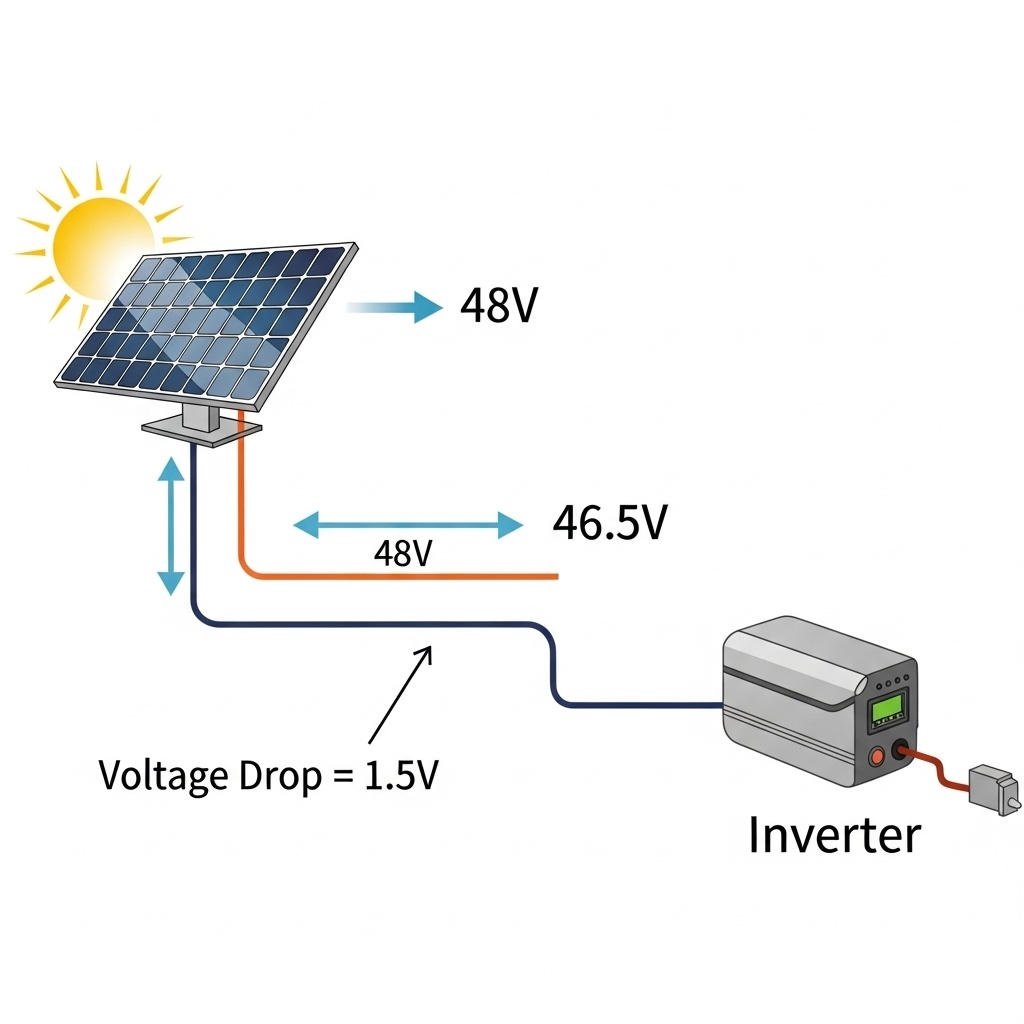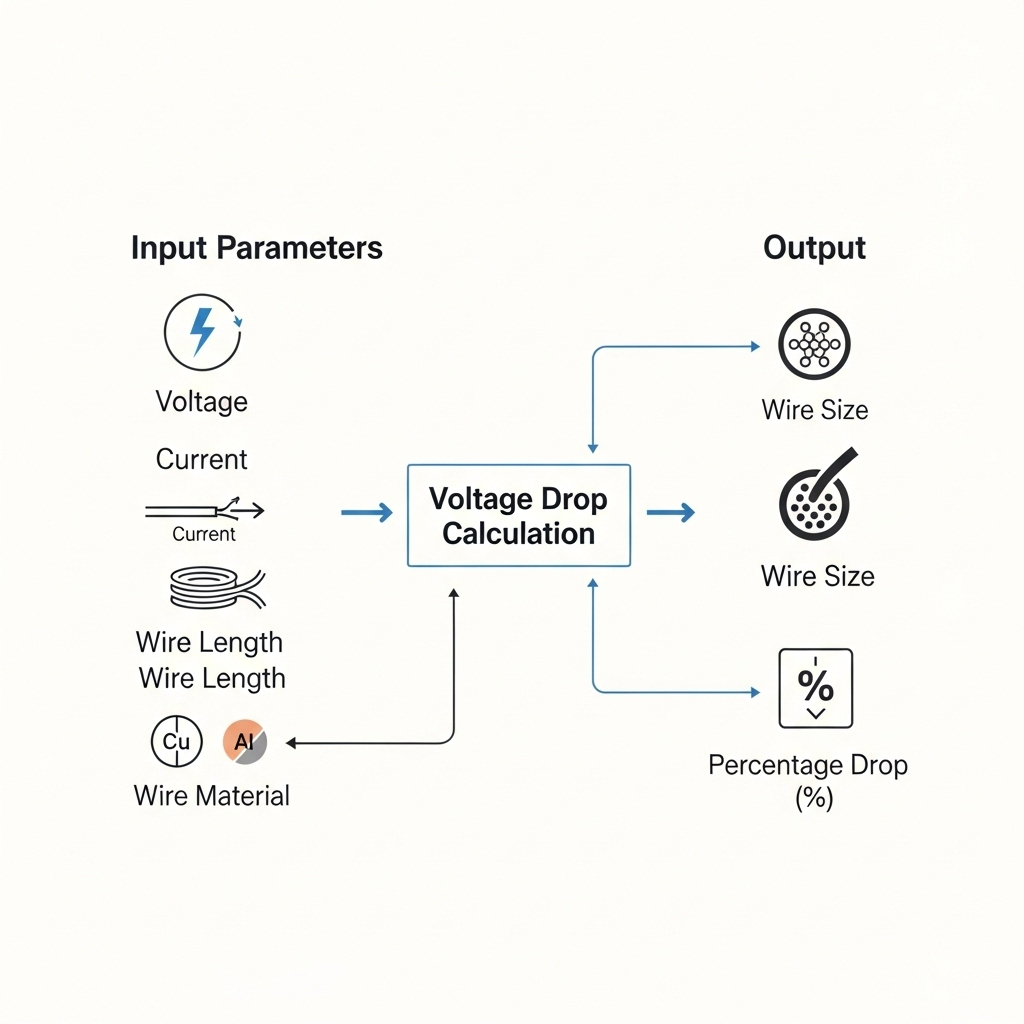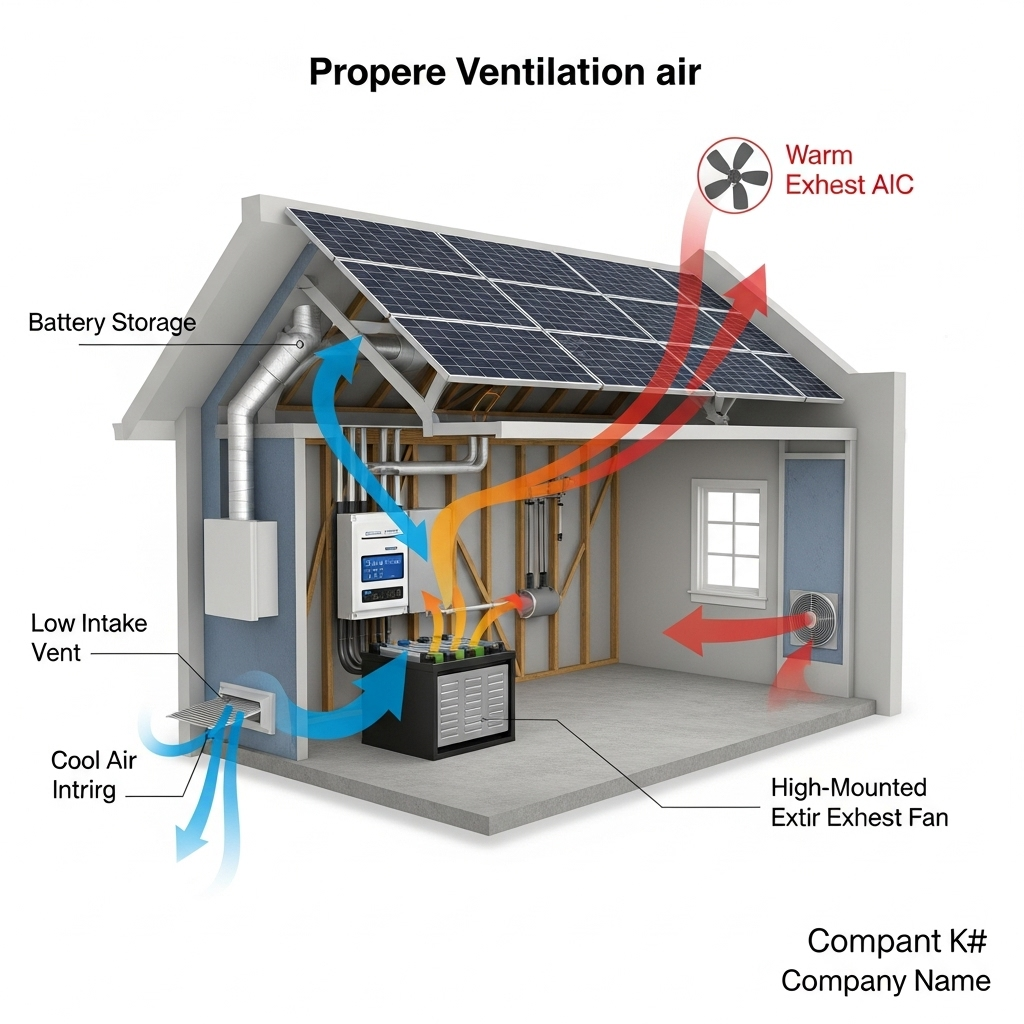Proper conductor sizing is fundamental to the safety, efficiency, and reliability of any solar power system. Undersized wires can lead to significant power loss, equipment damage, and even fire hazards. Two of the world's leading sets of standards, the National Electrical Code (NEC) and the International Electrotechnical Commission (IEC), provide frameworks for these critical calculations. Understanding their guidelines for voltage drop and solar conductor sizing ensures your system performs optimally and safely for years to come.
Understanding Voltage Drop and Its Impact
Voltage drop is the reduction in electrical potential or voltage along the path of a current-carrying wire. Think of it as a loss of pressure in a water pipe. While some drop is unavoidable, excessive voltage drop can starve your equipment of the power it needs to function correctly, leading to diminished energy harvest and premature component failure.
Why Voltage Drop is Critical in Solar Installations
In a solar energy system, significant voltage drop between the PV array and the inverter forces the inverter to operate outside its optimal Maximum Power Point Tracking (MPPT) window. This mismatch reduces the overall power output. High voltage drop translates directly into wasted energy, turning potential electricity into useless heat within the cables. This can cause nuisance tripping in inverters, which shut down if the input voltage falls below their minimum operating threshold.
Key Factors in Solar Conductor Sizing
Several variables determine the correct size for a conductor in a solar application. Ignoring any of these can lead to an inefficient or unsafe design. The primary factors include:
- Ampacity: The maximum current a conductor can handle safely without exceeding its temperature rating.
- Conductor Length: Longer wire runs result in greater voltage drop.
- Wire Gauge: A thicker wire (lower gauge number) has less resistance and thus less voltage drop.
- Material: Copper has lower resistance than aluminum for the same size, making it a more efficient conductor.
- Temperature: High ambient temperatures increase a conductor's resistance, reducing its effective ampacity.
Navigating the NEC Standards for Solar Systems
In North America, the NEC provides the foundational requirements for electrical installations. While it sets firm rules for safety, its guidance on voltage drop is often presented as a strong recommendation rather than a strict mandate.
NEC Recommendations on Voltage Drop
The NEC suggests, but does not strictly require, specific voltage drop limits to ensure reasonable efficiency. The generally accepted best practices, derived from NEC Informational Notes, are:
| Circuit Section | Recommended Maximum Voltage Drop |
|---|---|
| PV Source & Output Circuits (DC Side) | 3% |
| Inverter Output Circuit (AC Side) | 3% |
| Total from PV Array to Load | 5% |
Adhering to these percentages helps guarantee that your equipment receives adequate voltage and that energy losses are kept to a minimum. An Authority Having Jurisdiction (AHJ) can choose to enforce these recommendations.
Conductor Sizing Calculations per the NEC
NEC Article 690 specifically addresses solar photovoltaic systems. The sizing process involves calculating the maximum circuit current and then applying adjustment factors. Conductors are sized to carry 125% of the calculated maximum current to account for continuous loads. Furthermore, ampacity must be adjusted for ambient temperature and the number of current-carrying conductors bundled in a conduit, which can trap heat and reduce the wire's capacity.
Applying IEC Standards for Global Compliance
Outside of North America, standards from the International Electrotechnical Commission are the prevailing guidelines. The IEC's approach is often more performance-oriented, focusing on ensuring the system functions correctly under all expected conditions.
The IEC Approach to Voltage Drop and Sizing
IEC standards, such as IEC 60364 (Electrical Installations for Buildings) and IEC 62548 (Photovoltaic (PV) arrays - Design requirements), provide comprehensive tables and formulas for conductor sizing. These standards are critical for integrating renewable energy generation into the grid effectively. The calculations are based on the conductor's current-carrying capacity, the installation method, and permissible voltage drop, which is typically recommended to be below 3-5% depending on the application (e.g., lighting vs. motors).
Key Differences from NEC
While the physics are the same, the methodology and terminology can differ. The IEC uses metric wire sizes (mm²) instead of the American Wire Gauge (AWG) system. Its tables for ampacity are extensive, covering numerous installation scenarios (e.g., in walls, on trays, buried). The core formula for calculating voltage drop remains universal, but the specific resistance values and correction factors are found in IEC-specific documentation. As noted in the IEA report Getting Wind and Solar onto the Grid, harmonized standards are crucial for the reliable operation of power systems with high shares of variable renewable energy.
A Unified Strategy for Optimal Performance
Regardless of which standard you must follow, the goal is identical: a safe, efficient, and durable solar installation. A well-designed system minimizes resistive losses (I²R losses), ensuring that the maximum amount of solar energy is converted into usable electricity.
Connecting Sizing to System Efficiency
Every decision in conductor sizing has a direct effect on your system's financial return. A 2% voltage drop is effectively a 2% loss in potential revenue or energy savings. For a comprehensive overview of how different components contribute to overall system efficiency, the Ultimate Reference for Solar & Storage Performance offers detailed insights into energy losses and performance metrics. Properly sized conductors are a low-cost insurance policy against long-term underperformance.
Beyond the Basics: Advanced Considerations
For large-scale or complex systems, designers must also consider factors like short-circuit current ratings and the physical properties of conductors at high temperatures. As the IEA points out, replacing conductors with ones that can function at higher temperatures is a method used to increase the power-carrying capacity of grid lines. This same principle applies to large PV feeders, where managing thermal properties is essential for maximizing power transmission.
Building a Resilient and Efficient System
Mastering the rules of solar conductor sizing under NEC and IEC standards is not merely about compliance. It is about engineering excellence. By carefully calculating voltage drop and selecting the appropriate conductors, you build a foundation for a solar energy system that delivers on its promise of clean, reliable power. This attention to detail ensures equipment longevity, maximizes energy production, and provides a safe electrical environment.
Disclaimer
This article provides general information and is not a substitute for professional engineering or electrical advice. Always consult a qualified professional and adhere to all local codes and regulations when designing and installing a solar power system. All electrical work should be performed by a licensed electrician.
Frequently Asked Questions
What is the most common voltage drop limit for a solar PV system?
A common rule of thumb, supported by NEC recommendations, is to limit voltage drop to 3% for any single part of the circuit (DC or AC side) and to keep the total voltage drop from the solar panels to the point of use below 5%.
Are NEC voltage drop percentages a strict requirement?
In the NEC, voltage drop limits are typically found in 'Informational Notes,' which means they are recommendations, not mandatory code rules. However, local authorities (AHJs) have the final say and may enforce these limits as a condition of approval to ensure system performance and efficiency.
How does operating temperature affect solar conductor sizing?
Higher temperatures increase the electrical resistance of a wire. This means a conductor's ability to carry current (its ampacity) is reduced in hot environments, such as on a rooftop. Sizing calculations must include temperature correction factors to select a wire that can operate safely at the highest expected ambient temperature.





Leave a comment
All comments are moderated before being published.
This site is protected by hCaptcha and the hCaptcha Privacy Policy and Terms of Service apply.